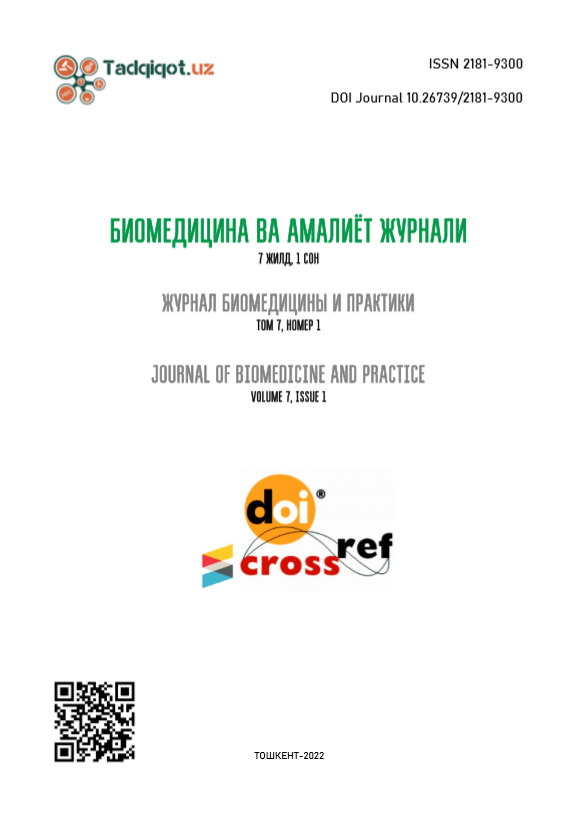ON THE ASSESSMENT OF ANOMALIES IN THE DEVELOPMENT OF THE VERTEBROBASILAR ZONE IN DYSCIRCULATORY ENCEPHALOPATHY BY MRI
Keywords:
magnetic resonance imaging, discirculatory encephalopathyAbstract
Purpose: to evaluate the role of magnetic resonance imaging in the diagnosis of brain lesions in patients with various stages of dyscirculatory encephalopathy against the background of developmental abnormalities.
Methods: The MRI study included 60 patients with discirculatory encephalopathy, among whom 8 patients with Kimmerle's anomaly were verified.
Results: The used method for evaluating the results of MRI included a qualitative study of structural changes in the brain and a quantitative analysis of the area of areas of change in signal intensity, sizes of the ventricular system of the brain, cerebro-ventricular indices, and diameters of intracranial arteries. The data of magnetic resonance angiography in each individual case made it possible to assess the diameter of the vertebral arteries and to determine the variants of the structure of the great vessels of the craniovertebral zone, combined with developmental anomalies. A hypoplastic vertebral artery was more often noted on the side where a closed form of Kimmerle's anomaly was found in patients with discirculatory encephalopathy.
Conclusions: MRI is an effective method for detecting foci of gliosis and leukoaraiosis in the brain substance. The use of a high-field tomograph makes it possible to clearly visualize changes in intracranial vessels, especially in the initial stage of discirculatory encephalopathy.
References
De Falco, A., De Simone, M., d’Onofrio, F. et al. Posterior reversible encephalopathy syndrome overlapping contrast-induced encephalopathy after coronary angiography. Neurol Sci 40, 1951–1953 (2019). https://doi.org/10.1007/s10072-019-03810-w
Dogan, V.B., Coban, E.K., Çelikkıran, P. et al. Transient lesion in splenium of the corpus callosum presenting as mild encephalopathy. Neurol Sci 39, 769–771 (2018). https://doi.org/10.1007/s10072-017-3178-0
Dong, X., Nao, J. Influential factors and clinical significance of an atypical presentation of posterior reversible encephalopathy syndrome in patients with eclampsia. Neurol Sci 40, 377–384 (2019). https://doi.org/10.1007/s10072-018-3642-5
Gaddamanugu, S., Shafaat, O., Sotoudeh, H. et al. Clinical applications of diffusion-weighted sequence in brain imaging: beyond stroke. Neuroradiology (2021). https://doi.org/10.1007/s00234-021-02819-3
Hamouda, D., Jillella, D.V., Bhatt, N. et al. Intraluminal carotid thrombosis and acute ischemic stroke associated with COVID-19. J Neurol 268, 4443–4447 (2021). https://doi.org/10.1007/s00415-021-10562-1
Hongo, Y., Kaneko, J., Suga, H. et al. A cluster of disseminated small cortical lesions in MELAS: its distinctive clinical and neuroimaging features. J Neurol 266, 1459–1472 (2019). https://doi.org/10.1007/s00415-019-09283-3
Motolese, F., Ferrante, M., Rossi, M. et al. Posterior Reversible Encephalopathy Syndrome and brain haemorrhage as COVID-19 complication: a review of the available literature. J Neurol 268, 4407–4414 (2021). https://doi.org/10.1007/s00415-021-10709-0
Racchiusa, S., Mormina, E., Ax, A. et al. Posterior reversible encephalopathy syndrome (PRES) and infection: a systematic review of the literature. Neurol Sci 40, 915–922 (2019). https://doi.org/10.1007/s10072-018-3651-4

